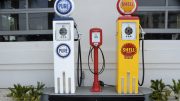 Decarbonisation. Solar. Wind. Green hydrogen. Electric cars. Energy storage. The main keywords of EU energy policies are the same as the USA, China, India, Brazil and Australia. The difference is the strategy – if you have one or not. It’s the difference between China’s energy transition and the rest of the world’s.
Decarbonisation. Solar. Wind. Green hydrogen. Electric cars. Energy storage. The main keywords of EU energy policies are the same as the USA, China, India, Brazil and Australia. The difference is the strategy – if you have one or not. It’s the difference between China’s energy transition and the rest of the world’s.
The first steps of the global energy transition have already revealed an insufficient supply of copper to meet a demand that will double within the next 12-15 years to cope with the massive growth of solar, wind, green hydrogen, electric cars, and energy storage.
Currently, around 60% of the world’s copper production comes from Chile, Peru, China, Congo and the USA. But over 80% of solar panel production – which requires copper – comes from China. The top five solar panel manufacturers worldwide are Chinese, and nine are in the top ten.
China alone will have total control of the production process and will be able to balance sustainability, safety and affordability in this sector. To decarbonise its economy, the European Union is accelerating solar and electric cars and is banning coal and diesel.
If the price of the energy transition already seems high, it is still nothing. To sustain its energy transition, Brussels has carved out a subordinate role with its own hands. The EU will rely on China not only for copper extraction but for its manufacture too. It is the difference between those who think, choose and then move and those who start running and ask themselves questions afterwards. The EU needs to find out how to get out of the corner it has gotten itself into.
Gianni Serra





